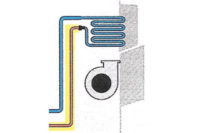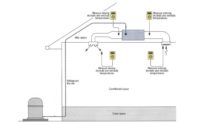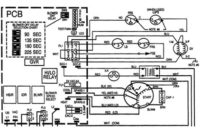In this troubleshooting situation, a technician has responded to a complaint of “not cooling” on a six-year-old R-410A split system that employs an up-flow gas furnace indoor air handler and a condensing unit that sits on the ground, and there is less than 20 feet of connecting tubing. An example of this piping configuration is shown in Figure One.
A factory installed molecular sieve filter-drier is located inside the condensing unit. Upon the technician’s arrival, no apparent electrical or air flow problem was found that would result in the lack of cooling capacity, necessitating a check of the refrigeration system. Connecting to the low side only, the result was a pressure reading that would be considered far below normal. Based on that information, the technician decided to add refrigerant.
In a short time, the technician notes that while refrigerant is being added, there is no change in the low side gauge pressure reading. It remains the same no matter how much refrigerant is added, which leads to an inspection of the connecting tubing. At the indoor coil, the correct piping of the liquid line near the indoor coil employs a 90-degree ell along with a turn near the fixed bore metering device. Upon close inspection of this segment of tubing, it’s found to be cold to the touch.
Your troubleshooting question: After shutting the system down and recovering the refrigerant, what did the technician find in the above-mentioned section of liquid line piping?
Submit your answer here.
Want more HVAC industry news and information? Join The NEWS on Facebook, Twitter, and LinkedIn today!






Report Abusive Comment